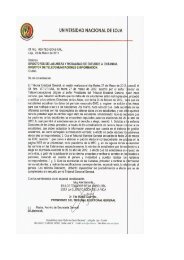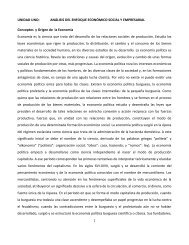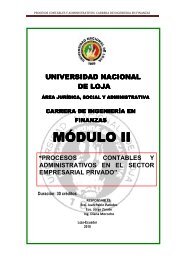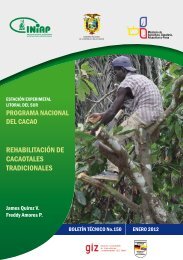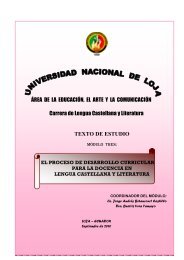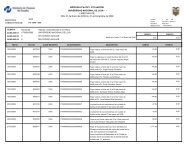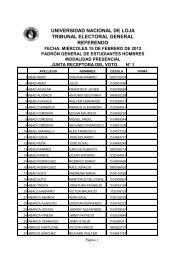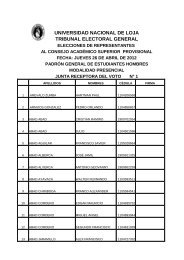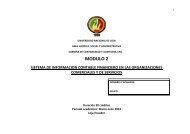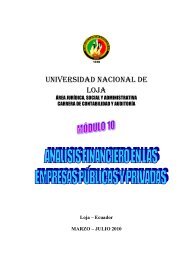module 5 planning of the english language teaching-learning process
module 5 planning of the english language teaching-learning process
module 5 planning of the english language teaching-learning process
Create successful ePaper yourself
Turn your PDF publications into a flip-book with our unique Google optimized e-Paper software.
UNIVERSIDAD NACIONAL DE LOJA<br />
Área de la Educación el Arte y la Comunicación<br />
English Language Career<br />
Here are <strong>the</strong> answers to <strong>the</strong> questions above<br />
Activity Skill/subskill/<strong>language</strong> Type <strong>of</strong> activity<br />
1 Reading for specific Wh-questions (questions beginning with<br />
Information<br />
question words: e.g.<br />
2 Listening for specific<br />
Information<br />
3 Reading for detail Ordering<br />
4 Listening for specific Form filling<br />
information<br />
5 Fluency in<br />
speaking/freer<br />
practice <strong>of</strong> new<br />
<strong>language</strong><br />
which/what/how/when/why) for comprehension<br />
A. Multiple-choice questions (an activity in<br />
which you choose <strong>the</strong> best answer from<br />
three or more possible answers)<br />
B. True/False questions (an activity in which<br />
you decide whe<strong>the</strong>r statements are correct<br />
or incorrect)<br />
Role-play (an activity in which you imagine that<br />
you are someone else in a specific situation)<br />
6 Accuracy in<br />
speaking/ controlled<br />
practice <strong>of</strong> new<br />
<strong>language</strong><br />
Survey (finding out <strong>the</strong> opinions <strong>of</strong> a group on<br />
one topic)<br />
We can see that activities can differ in several ways: <strong>the</strong> skill or subskill <strong>the</strong>y<br />
focus on; what type <strong>the</strong>y are and what interaction patterns <strong>the</strong>y use. The kinds<br />
<strong>of</strong> skills or <strong>the</strong> <strong>language</strong> <strong>the</strong> focus on and <strong>the</strong> interaction patterns <strong>the</strong>y use are<br />
not fixed. So for example, multiple -choice questions could be used for reading,<br />
listening or grammar activities and can be done individually, in pairs or in<br />
groups. Similarly, form-filling could be used for reading, listening or grammar<br />
practice, and done individually, in pairs or in groups.<br />
Activities 5 and 6 both involve learners talking to one ano<strong>the</strong>r to exchange<br />
information <strong>the</strong>y don't know. This means <strong>the</strong>y are talking in order to<br />
communicate, not just to practice <strong>language</strong>. This kind <strong>of</strong> activity in which<br />
learners information on exchange information that only one, <strong>of</strong> <strong>the</strong>m has is<br />
called an information gap or a communicative activity.<br />
An activity may focus on accuracy or communication depending on how it is<br />
introduced t <strong>the</strong> teacher or <strong>the</strong> materials. For example, <strong>the</strong> survey above is<br />
focused on accuracy because limits <strong>the</strong> <strong>language</strong> that learners use to ask and<br />
answer two specific questions. If <strong>the</strong> instructions for <strong>the</strong> activity were ‘Find out<br />
about your friends’ likes and dislikes in food’, this would not restrict learners'<br />
choice <strong>of</strong> <strong>language</strong> and <strong>the</strong> activity would focus on communication<br />
Key concepts and <strong>the</strong> <strong>language</strong> <strong>teaching</strong> classroom<br />
[Escribir texto] Página 67



